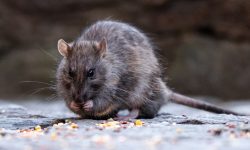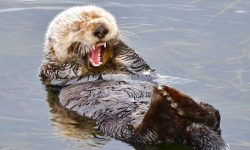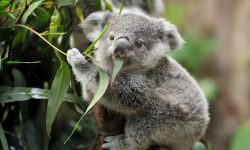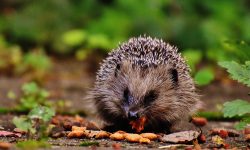Hermit crabs are fascinating little scavengers with diets far more complex than most people realize. In the wild, they survive by eating a mix of plants, small animals, and decaying organic matter. Their ability to consume a wide variety of foods is what helps them thrive in ever-changing coastal environments.
Because hermit crabs depend on scavenging, their diet constantly shifts based on season, habitat, and available resources. This makes them incredibly adaptable creatures, able to survive where more specialized feeders would struggle. Understanding what hermit crabs eat not only reveals how they stay healthy but also teaches us about their role in keeping beaches and forests clean.
Whether in the wild or in captivity, hermit crabs need a balanced mix of protein, calcium, and plant matter. A diverse diet ensures strong shells, smooth molting cycles, and stable energy levels. Below is the most detailed guide on the 20 foods hermit crabs love the most, written with short paragraphs and clear spacing so bạn dễ chèn quảng cáo.
Understanding the Hermit Crab Diet

How Hermit Crabs Eat in the Wild
Hermit crabs are omnivorous scavengers, meaning they will eat nearly anything organic they can find. This includes fallen fruits, dead fish, algae, leaves, and even other small invertebrates. Their diet changes daily depending on tides and natural debris.
Wild hermit crabs use their sensitive antennae to detect food hidden beneath sand or trapped in tide pools. This allows them to take advantage of resources that many other animals overlook.
Because they never know what food will be available next, hermit crabs naturally consume a wide range of nutrients, protecting them from deficiencies.
Why a Varied Diet Is Essential
Hermit crabs need protein for growth, calcium for strong exoskeletons, and plant matter for digestion. A limited diet can lead to lethargy, molting problems, or shell weakness.
Each food source contributes something unique. For example, seaweed offers iodine, while nuts provide energy-rich fats. Even small portions can significantly benefit their health.
Diversity is the key. The more varied the diet, the closer it becomes to what hermit crabs experience in nature.
Feeding Behavior and Preferences
Hermit crabs prefer soft, moist foods because they are easier to shred with their small claws. They also tend to be most active at night, which is when they search for meals.
Their strong sense of smell helps them locate food quickly, even over long distances.
In both wild and captive environments, hermit crabs will always choose fresh, natural foods over processed or artificial options.
20 Foods Hermit Crabs Love the Most
1. Seaweed
Seaweed is one of the most essential wild foods for hermit crabs, offering natural iodine, minerals, and hydration. It washes ashore in large amounts after storms, giving hermit crabs easy access to nutrient-rich meals.
Its soft, flexible texture makes it simple for hermit crabs to shred using their claws. Even small pieces provide crucial nutrition that supports shell strength and metabolic function.
Because seaweed closely matches the mineral profile of coastal habitats, it remains one of the most naturally balanced foods hermit crabs consume in the wild.
2. Algae
Algae grow naturally on rocks, driftwood, and underwater surfaces, creating constant feeding opportunities. Hermit crabs scrape algae using their claws, often spending hours cleaning surfaces as they forage.
This plant material contains vitamins, antioxidants, and moisture that help keep hermit crabs active and healthy during long nights of scavenging.
Since algae grow year-round, it provides a reliable food source even during dry seasons when other vegetation becomes scarce.
3. Fish Carcasses
Washed-up fish carcasses provide protein-rich meals that support growth, energy, and successful molting. Hermit crabs detect the scent from long distances and quickly gather around decomposing fish.
Small crabs nibble on soft tissues while larger ones rip off pieces of flesh, ensuring every member of the colony gets nourishment.
These carcasses play an essential ecological role by preventing organic waste from accumulating along shorelines.
4. Dead Invertebrates
Hermit crabs regularly feed on dead shrimp, worms, and small marine animals that wash ashore. These soft-bodied creatures are easy to eat and packed with nutrients.
The protein and fats found in invertebrates help hermit crabs sustain high activity levels, especially during nighttime scavenging.
This feeding behavior also contributes to the natural cleanup of beaches and tidal pools.
5. Leaf Litter
Leaf litter is an important source of fiber, minerals, and natural plant compounds. Hermit crabs consume both partially decomposed and freshly fallen leaves.
These leaves help support digestive health and regulate the gut during molting cycles. They also contain microorganisms that add additional nutritional benefits.
Forested hermit crab species depend heavily on leaf litter during rainy seasons when vegetation is most abundant.
6. Fruits
Wild hermit crabs enjoy fallen fruits such as mango, papaya, coconut, banana, and guava. These fruits provide natural sugars, vitamins, and hydration.
Ripe and fermenting fruit releases strong aromas that attract hermit crabs from a distance, making them some of the easiest food items to locate.
Fruits also help maintain hydration in hot climates where fresh water may be difficult to access.
7. Vegetables
Hermit crabs consume soft plant stems, roots, and leafy greens in their natural habitats. Vegetables offer vitamins and antioxidants that support immunity and molting.
Tender plant material is especially useful during dry months when juicy foods are limited. Hermit crabs gravitate toward moisture-rich vegetation because it replenishes fluids.
These foods help keep digestion smooth and energy levels consistent.
8. Nuts and Seeds
Nuts and seeds found under trees or buried in soil offer hermit crabs concentrated energy. Even small amounts provide fats, minerals, and plant proteins.
Crabs often carry pieces of nuts to hiding spots before eating them, especially in areas with predators.
Because seeds are calorie-dense, they support growth and shell regeneration with minimal effort.
9. Coconut Flesh
Coconut meat is a favorite among hermit crabs due to its sweetness and oil content. Its soft texture makes it easy for crabs of all sizes to consume.
Fallen coconuts crack naturally, exposing the flesh inside—a perfect feeding opportunity for wild crabs.
Coconut contributes to strong exoskeleton development and provides long-lasting energy.
10. Tree Bark
Hermit crabs sometimes scrape the surface of tree bark to access moisture and nutrients within the layers. This behavior is common in humid coastal forests.
Bark fibers help regulate digestion by adding roughage to the diet. They also house lichens and algae, which provide additional nutrition.
This food source supports wild hermit crabs during vegetation shortages.
11. Flowers
Fallen flowers and fresh blossoms supply hermit crabs with natural sugars, moisture, and gentle flavors. They are especially attractive after rainstorms.
Their delicate structure makes them easy to consume without effort, even for small crabs.
Flowers also serve as foraging sites for tiny insects, giving hermit crabs both plant and animal nutrition in one place.
12. Insects
Small insects found under logs, rocks, or leaf piles are a valuable protein source. Hermit crabs consume ants, beetles, gnats, and other tiny creatures.
Insects supply amino acids required for growth, especially for juvenile hermit crabs.
This opportunistic feeding behavior mimics the scavenging lifestyle that keeps hermit crab populations thriving.
13. Mollusks
When hermit crabs find dead snails or broken shells containing meat, they quickly feed on them. Mollusks provide high levels of calcium and protein.
Shell fragments also help supply minerals needed for strong exoskeleton formation.
This food source becomes especially important before molting cycles.
14. Worms
Earthworms and marine worms deliver hydration and easily digestible protein. Their soft bodies make them perfect prey for hermit crabs of all sizes.
Crabs often locate worms during rainfall or when soil becomes saturated.
This consistent and abundant food contributes to steady growth and energy.
15. Fungi
Fungi and small mushrooms that grow in humid environments supply hermit crabs with hydration and trace nutrients. They are commonly found in decomposing logs or forest floors.
These fungal tissues soften naturally, making them easy to eat.
Fungi-rich areas also teem with insects, giving hermit crabs multiple food types in one location.
16. Rotting Wood
Soft, decaying wood provides fiber and microbacterial nutrients essential for digestion. Hermit crabs scrape wood using their claws and mandibles.
Moist wood helps maintain hydration levels during dry conditions. It also improves gut function by encouraging healthy bacteria.
This natural food source mimics the environmental materials hermit crabs encounter daily.
17. Eggshells
Eggshell fragments serve as an excellent source of calcium, important for maintaining shell integrity and supporting molting.
Hermit crabs will consume small pieces they find on forest floors or beaches where birds nest.
Even tiny fragments provide meaningful nutritional benefits over time.
18. Bird Droppings
Bird droppings contain seeds, digested plant materials, and nitrogen-rich compounds. Though unusual, they are a valuable survival food.
Hermit crabs take advantage of these nutrient-dense deposits when other foods become scarce.
This behavior highlights their scavenging adaptability in unpredictable environments.
19. Sea Sponges
Pieces of natural sea sponge found along beaches offer moisture, minerals, and organic compounds. Hermit crabs graze on the soft tissue easily.
Sponges help hydrate the digestive system and provide slow-release nutrients.
They are rare but highly beneficial when available.
20. Decaying Organic Matter
Hermit crabs thrive on decaying vegetation, fallen fruit, dead animals, and plant debris. This is their most consistent and abundant food source.
The bacteria and nutrients in decomposing matter help support gut health and energy levels.
By consuming decaying material, hermit crabs play an essential role in cleaning and recycling coastal ecosystems.
FAQs About the Hermit Crab Diet
Do hermit crabs eat meat?
Yes, hermit crabs naturally eat small insects, dead fish, worms, and decaying animals. Meat provides essential protein for growth.
Can hermit crabs eat fruit every day?
Fruit is healthy but should be eaten in moderation due to natural sugars. Wild hermit crabs consume fruit seasonally.
Do hermit crabs need calcium?
Absolutely. Calcium is essential for building strong exoskeletons and supporting healthy molting cycles.
What foods are dangerous for hermit crabs?
Processed foods, salty snacks, spicy foods, chocolate, onions, and garlic are harmful and must be avoided.
How often do hermit crabs eat in the wild?
Hermit crabs forage throughout the night, eating multiple small meals rather than one large meal.
Do hermit crabs drink water?
Yes. They need both fresh and saltwater sources for drinking and maintaining hydration.
Can hermit crabs eat vegetables?
Yes. Soft vegetables like spinach, pumpkin, and carrots are nutritious and easy to digest.
Do hermit crabs eat algae naturally?
Yes. Algae is one of their most common wild foods and provides vital nutrients.
Final Thoughts
Hermit crabs thrive on variety, consuming everything from seaweed and fruits to insects and decaying plants. Their flexible diet allows them to survive in changing environments and maintain strong shells and healthy bodies. Providing a diverse range of natural foods ensures they stay active, well-nourished, and capable of thriving just as they do in the wild.






